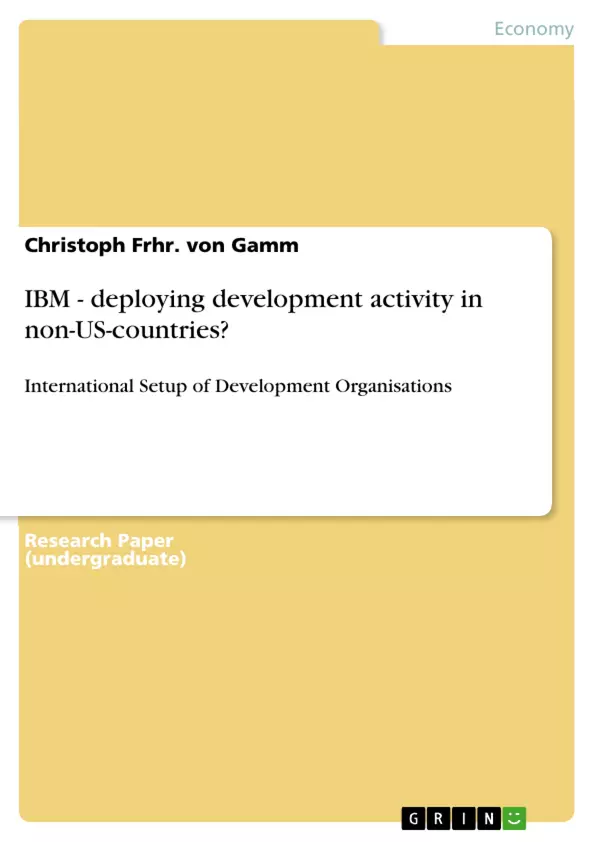IBM is now operating in more than 189 countries, has concentrated about 70% of its research and development activities in the US, with all its research and development headquarters - except
two small subdivisions (Display Systems Division and Embedded Systems Business Unit) which are based in Japan. With the attrition in the US, reaching top levels - like in Austin TX, a major development hub with 30% and more per year - and similar attrition figures in the San Jose / Silicon Valley arena, it is
becoming very hard to have a sustainable quality level in the further development of high-class server systems or middle ware software - both activities that need huge quantities of developers and a core research staff, highly educated and also highly flexible in adopting towards future customer requirements.
Though, there is a need to get development sites in areas with stable employment possibilities for the corporation, and - whilst doing so - also guaranteeing a sustainable level of new hires year over year to support both growth and minor attrition effects.
This research investigates how and where to set up new development labs outside of the United States.
Inhaltsverzeichnis (Table of Contents)
- Executive Summary
- Screening for a suitable place
- General assumptions
- Exclusion of unappropriapte regions
- Five countries in overview
- Relevant screening factors
- Leading Countries
- Key success factors
- Recommended area.
- Strategic limitations of IBM
- The next step
- Plan for implementation
- Entry mode: learning by doing
- Make or Buy? - Make!
- Extending organizational relationships
- Expanding external structures
- Aligning functions strategically
- Human resources strategy
- Hiring workforce
- Retaining workforce
- Training and development
- Career Management
- Managing a diverse workforce
- Human resource Marketing
- Knowledge and Information management
Zielsetzung und Themenschwerpunkte (Objectives and Key Themes)
This report aims to identify the optimal location outside the United States and Europe for IBM to expand its research and development activities. The report leverages empirical and statistical data to evaluate various countries and provide a recommendation based on factors such as availability of IT skills, economic stability, and cultural compatibility.- Identifying suitable locations for IBM's research and development expansion outside the US and Europe.
- Analyzing the availability and quality of IT skills in potential target countries.
- Evaluating economic, political, and cultural factors that may influence IBM's operations.
- Developing a strategy for attracting, retaining, and managing a diverse workforce in the chosen location.
- Examining the implications of cultural and governmental differences on IBM's operations.
Zusammenfassung der Kapitel (Chapter Summaries)
- Executive Summary: This chapter outlines the rationale for IBM's need to expand its research and development activities outside the US. It highlights the challenges faced in maintaining high-quality development in the US and the need to secure a sustainable workforce in a new location.
- Screening for a suitable place: This chapter introduces the general assumptions behind the selection process and identifies regions that are unsuitable for IBM's operations. It outlines factors such as IT skills availability, political stability, and economic factors.
Schlüsselwörter (Keywords)
This report focuses on the strategic expansion of IBM's research and development activities beyond the US and Europe. Key themes include the assessment of IT skill availability, the evaluation of economic and political stability, the development of a human resource strategy for attracting and retaining a qualified workforce, and the impact of cultural and governmental differences on IBM's operations.- Citar trabajo
- Dipl.-Ing. Christoph Frhr. von Gamm (Autor), 2000, IBM - deploying development activity in non-US-countries?, Múnich, GRIN Verlag, https://www.grin.com/document/144860



